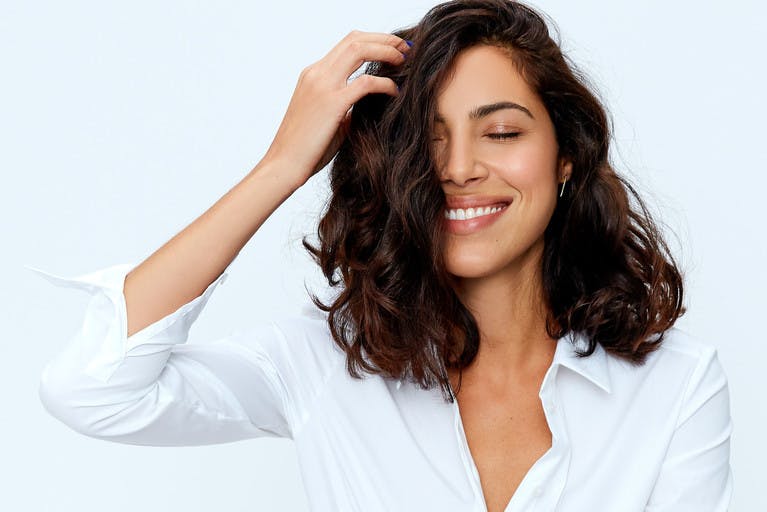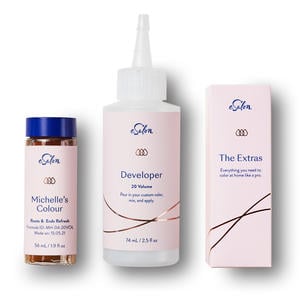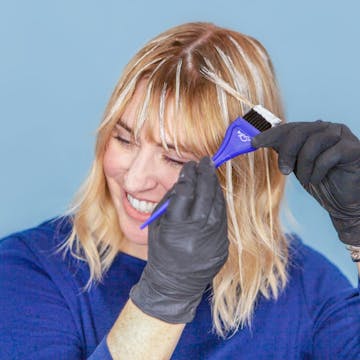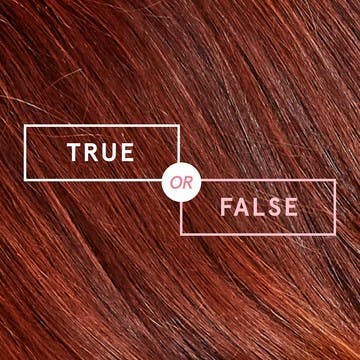How to Color Previously Colored Hair
Color your hair at home like a professional colorist. Go lighter, go darker, cover highlights, dye previously colored hair, or maintain your current look with pro tips from our hair color experts.
So you want to color your hair at home instead of going to the salon, but you're feeling a little nervous. You're in the right place! We've got total pro secrets from our colorists that will help you take your previously color-treated hair lighter or darker, teach you just what to do about highlights, and keep your hair dye fresh once you've reached your goals. Coloring with confidence? Coming right up.
Maintaining Your Color
The first rule of at-home color maintenance? Treat your new growth only! If you've found your shade and just want to keep your color-treated hair vibrant, make sure that any touch-ups you do stay strictly to the roots. According to our hair color experts, overlapping onto previously colored hair can leave you with unnecessarily dark hair or damaged hair. If you need an all-over color-treated hair boost, we recommend massaging leftover color pigment throughout the rest of your hair right before it's time to rinse.
“If you've found your shade and just want to keep it up, make sure that touch-ups stay strictly to the roots.
Going Darker
If you're ready to take your previously lightened hair to a darker shade even to a dark brown or you're covering gray hair, the easiest way is to darken it gradually in stages. That way you can prevent it from getting too dark a shade, which is difficult to correct and can cause damaged hair if you try to attain a lighter color. We recommend darkening your hair two shades lighter than your goal hair color, and if it's still too light, then go a little bit darker with your hair dye! Remember: dyeing hair to a darker shade is much easier on your hair health than going lighter. Slow and steady wins the race and remember to start with your roots!
Going Lighter
Getting a lighter color at home can be a trickier transition than going to a darker shade since most at-home hair color products cannot lift hair color. However, we do have a few tips on the easiest way to lighten previously colored hair in an at-home setting that can make the transition to a lighter color easier. One option is to lighten only your new growth while letting the ends of your hair fade gradually to match. Another would be to add highlights or balayage to weave lighter color hair pieces into your darker hair color as it grows out. Pro tip: It may also be helpful to use a color removal product to eliminate the existing darker color pigment and help avoid damaged hair.
Covering Highlights
If you have highlights and are ready to say "bye-lights" to that hair color, it can be a little more complicated than simply using permanent color to dye over them. First, you may need a color fill, which replaces the color pigment that was stripped when getting a lighter color for highlighting. Think of the pigment in your hair color as an undercoat. To lighten your color, you need to get rid of that darker hair undercoat without causing damaged hair. When going darker after having previously colored hair, you'll need to put the undercoat back so that your color looks even and vibrant. That's what a color-fill does, and it is perfect for covering highlights without adding permanent color.
Keeping Highlights
On the other hand, if you love your current color highlights but still want to cover your roots, we recommend using a single-process hair dye on your new growth and avoiding getting any color on your highlights. If it matches the base color, this application will help blend your root for a natural look.
New to eSalon? Interested in getting a hair color crafted for you and only you that you can use at home? Complete our Quiz and get your custom color shade today!
Want more application tips? Here are our secrets for seamless color:
✓ 10 Things to Know Before You Color Your Hair






